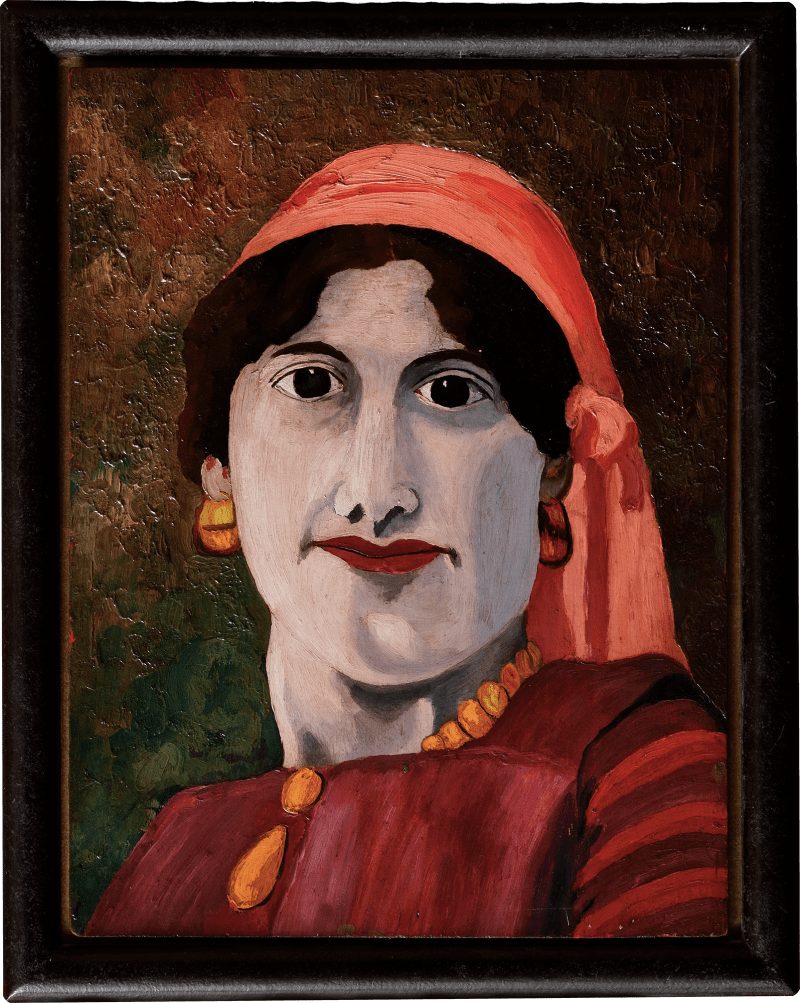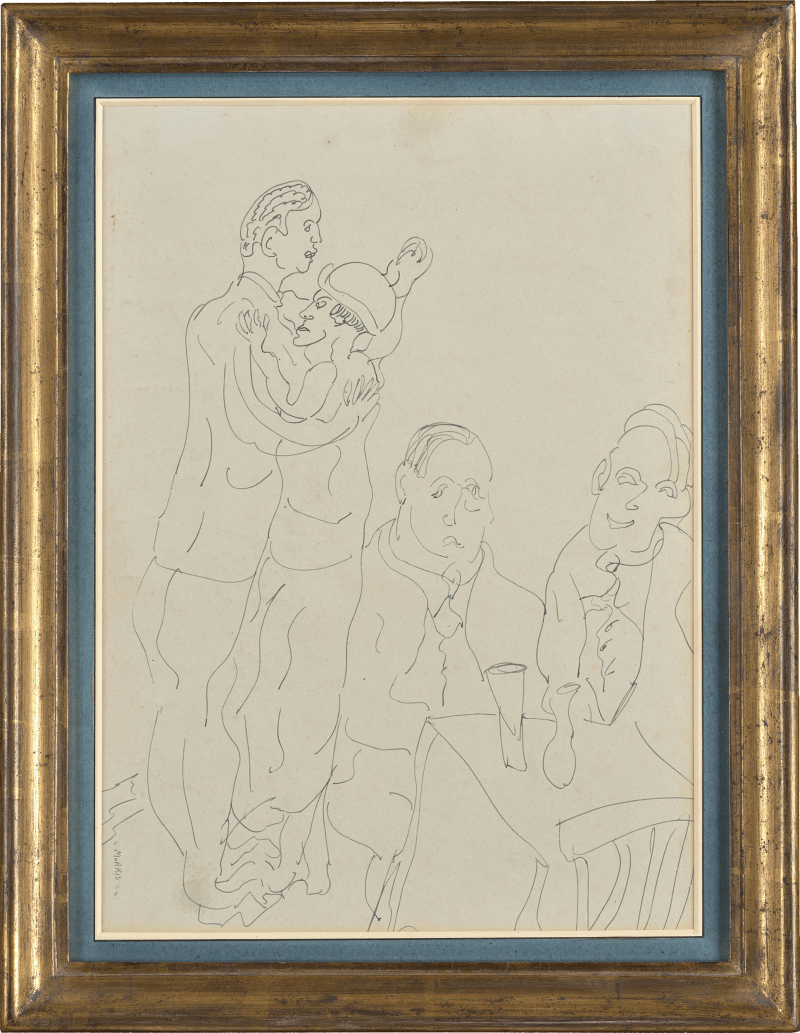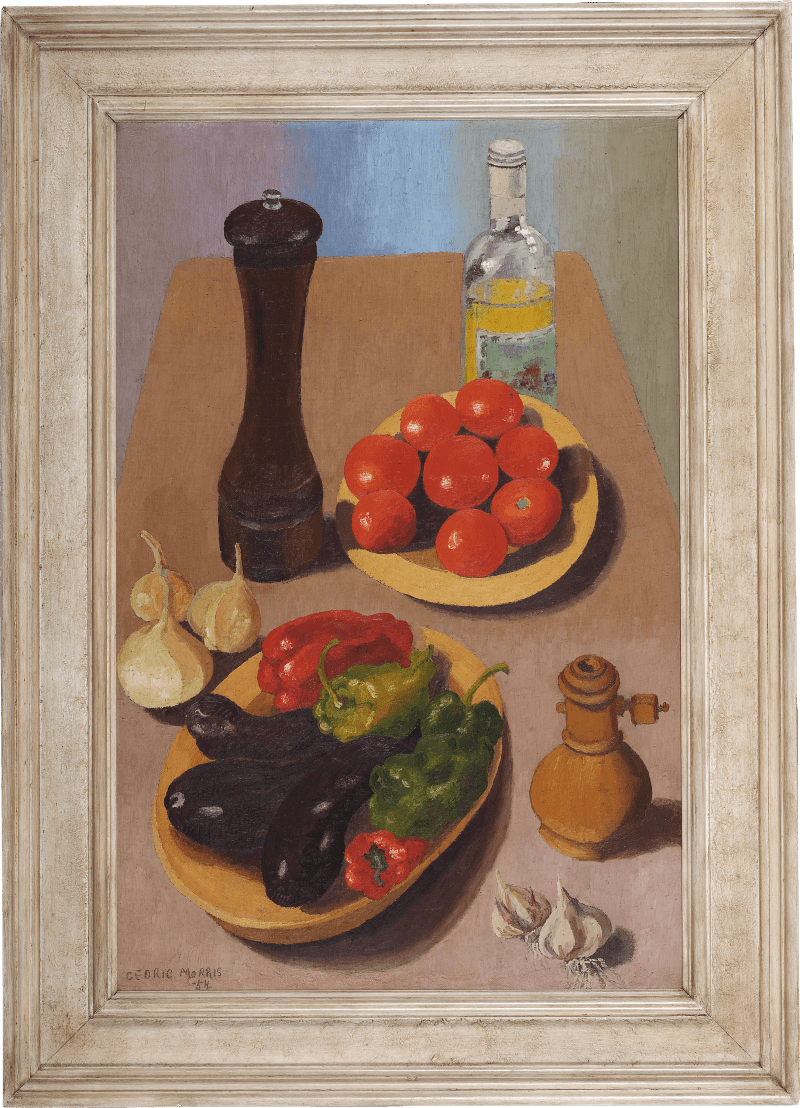
Cedric Morris
(1889-1982) A Mare and FoalProvenance
Bonhams, 20 November 2019, consigned from the above;
Private collection, U.K., acquired from the above;
Philip Mould & Company, London.
Exhibitions
Arthur Tooth & Sons, London, Paintings by Cedric Morris, May 1928.
This quaint view of an English farmstead is an early work by the celebrated flower and landscape painter, Cedric Morris.
Throughout most of his early career, Morris lived and worked between London and Paris. Although these metropolitan centres of the Avant-guard enlivened Morris’ modernist proclivities, they were a far cry from a plantsman’s paradise. As a result, Morris never missed an opportunity to escape to the countryside to paint.
This work was painted in 1925, soon after Cedric Morris and his partner, Arthur Lett-Haines, moved back to London from Paris. During this period, both men were both working hard to build Morris’s reputation as a leading contemporary artist by networking with potential patrons and gallerists in London. Accordingly, long visits to the countryside became vital for Morris’ well-being and East Sussex became one of their favourite haunts. They would often stay with friends in Wilmington and paint the surrounding landscape and local landmarks, such as the ‘Wilmington Giant’.[1]...
This quaint view of an English farmstead is an early work by the celebrated flower and landscape painter, Cedric Morris.
Throughout most of his early career, Morris lived and worked between London and Paris. Although these metropolitan centres of the Avant-guard enlivened Morris’ modernist proclivities, they were a far cry from a plantsman’s paradise. As a result, Morris never missed an opportunity to escape to the countryside to paint.
This work was painted in 1925, soon after Cedric Morris and his partner, Arthur Lett-Haines, moved back to London from Paris. During this period, both men were both working hard to build Morris’s reputation as a leading contemporary artist by networking with potential patrons and gallerists in London. Accordingly, long visits to the countryside became vital for Morris’ well-being and East Sussex became one of their favourite haunts. They would often stay with friends in Wilmington and paint the surrounding landscape and local landmarks, such as the ‘Wilmington Giant’.[1]
This atmospheric view of a farm documents Morris’ distinctive working methods. Canvas alone possessed the necessary ‘give’ that Morris required for his technique; he applied his paint unsparingly, working in a series of small strokes horizontally, line by line. Millie Hayes, a student at the East Anglian School of Painting and Drawing (EASPD), recalls Morris advising students not to draw with paint but rather to ‘bounce’ with it across the canvas.[2] It is this remarkable technique that infuses Morris’ works with a liveliness and a direct sense of presence, as though he was digging directly with his paintbrush.[3] Here, he integrates the natural irregularity of the British countryside with the geometry of the farmyard buildings. During this earlier stage in his artistic career, Morris nurtured form, colour, and texture in his pursuit of compositional harmony. His respect for the landscape and animals is also evident in the way he often emphasizes and presents natural activity in the foreground. Adopting the viewpoint of an undetected observer, Morris is able to capture an endearing glimpse into the uninterrupted natural behaviour of a horse and her young foal roaming in the grass. Morris’ depictions of the British countryside are localised views that synthesise his intuitive understanding of the natural world.
[1] The Wilmington Giant (now often called ‘Long Man of Wilmington’) is mentioned in Lett-Haines, A. (c. 1937) Notebook. [Manuscript.] TGA 8317/2/2/1. London: Tate Archives, p. 18.
[2] Morphet, R. (1984) Cedric Morris. London: The Tate Gallery, p.90.
[3] Neve, C. (2020) Unquiet Landscape: Places and Ideas in 20th Century British Painting. London: Thames and Hudson, p. 71.









